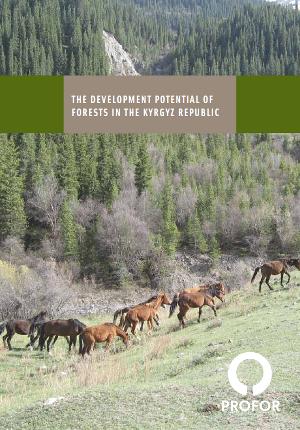
Share
Attachments
Questionnaire-Kyrgyz-forestuse_0.pdf
Walnut_Value_Chain_KyrgyzRepublic_0.pdf
ProFor Kyrgyz report_web_0.pdf
Keywords
Authors/Partners
Asyl Undeland (Consultant) and Willie Bourne (International Value Chain and Marketing Specialist). The Kyrgyz-based Rural Development Fund and the World Bank Europe and Central Asia Region.
The Development Potential of Forests in the Kyrgyz Republic
CHALLENGE
What are the structural and institutional constraints to generating income from Non-Timber Forest Products (NTFPs) and ensuring the benefits accrue to poor rural communities in the Kyrgyz Republic?
More than 35% of Kyrgyz Republic’s population lives below the poverty line. And the poorer, more isolated rural communities tend to rely on forests as a source of consumables, energy, and to an increasing extent, income-generating produce. This is especially true for the villagers who live on the periphery of walnut forests who depend on this resource for their daily subsistence and income.
The export potential for NTFPs in the Kyrgyz Republic is inadequately known. But opportunities could be significant. For example, dry nuts are non-perishable, have a high value per unit of weight, and benefit from marked increase in international demand.
APPROACH
In 2009-2011, PROFOR supported analysis in this area in collaboration with the World Bank to provide a stronger factual base for the growing debate in the country concerning forest management. At the request of the State Agency for Environment and Forestry, special attention was paid to issues of management of municipal forests.
The activity was implemented by the Rural Development Fund, a Kyrgyz-based NGO, which focused the study on five forestry enterprises (leskhoz). In addition, a specialist conducted a detailed analysis of the value chain for one of the most important NTFPs in the area -- walnuts.
RESULTS
The main report, The Development Potential of Forests in the Kyrgyz Republic, contains seven key recommendations to alter the current dynamics of forestry management:
1. Review and ensure alignment within policy direction, the legislative underpinning of that policy, and on-the-ground realities of how forests are used now and can reasonably expected to be used in the future.
2. Address the poor incentive structures within leskhoz management by revising their administrative and financing frameworks.
3. Integrate management of leskhoz lands that are suitable for pasture to the overall pasture management systems.
4. Increase the involvement of communities through a deliberate, gradual process.
5. Consider other implementation modalities for Community Based Forest Management.
6. Consider an enhanced role for local governments in holding leskhoz accountable.
7. Secure assistance to continue capacity support at both the national and local levels.
The Analysis of the Walnut Value Chain in turn, shows that improvements to the efficiency of the walnut value chain in Jalal-Abad could improve the income and livelihoods of many participants, increase employment through value addition and increase the national GDP through exports. Regional economic growth, if equitably distributed, could also serve to reduce ethnic tensions and division. Support to improve the efficiency of value chains of walnuts and other NTFPS would also help to promote sustainable walnut-fruit forestry management practices, currently under threat from increased population pressure, deforestation and livestock farming
In addition to the two reports available on this page, workshops were held with high buy in and participation from government institutions as well as other relevant stakeholders.
The reports' findings should help inform implementation of government and donor interventions to improve forest management, with a focus on the relationships between State Forest Enterprises inherited from the Soviet era (leskhoz) and local villagers in harvesting timber and NTFPs. In particular, the formulation of specific recommendations for overcoming policy and market value chain problems should help increase the benefits that communities derive from forests and their products.
For stories and updates on related activities, follow us on twitter and facebook , or subscribe to our mailing list for regular updates.
Author : Asyl Undeland (Consultant) and Willie Bourne (International Value Chain and Marketing Specialist). The Kyrgyz-based Rural Development Fund and the World Bank Europe and Central Asia Region.
Last Updated : 06-16-2024








